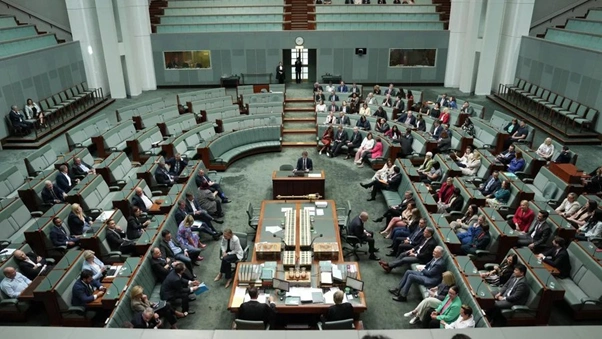Australia has witnessed a landmark shift in environmental policy after Parliament passed sweeping conservation reforms following a hard-fought deal between Labor and the Greens. The legislative package marks the most significant overhaul of nature protection laws in decades.
The agreement centres on three major pillars: establishing a Native Forest Protection Act, reforming the Environment Protection and Biodiversity Conservation (EPBC) Act, and creating an independent Environment Protection Australia (EPA) agency with genuine enforcement powers.
Greens Secure Key Wins in Environmental Protection Push
The Australian Greens extracted substantial concessions from the Albanese government during tense negotiations that extended into late November 2025. Senator Sarah Hanson-Young described the outcome as “a watershed moment for Australian conservation.”
Key elements secured by the Greens include:
- Statutory protection for all remaining native forests on public land
- Enhanced biodiversity safeguards within development assessment processes
- Mandatory consideration of cumulative environmental impacts
- Strengthened climate considerations in project approvals
- Increased funding for ecosystem restoration programs
Environment Minister Tanya Plibersek praised the reforms as delivering “the balance Australia needs between development and protection.” The government committed AUD 450 million over four years to support implementation and monitoring.
Independent MP Zali Steggall welcomed the reforms but questioned whether enforcement mechanisms carry sufficient teeth to deliver real-world outcomes.
Parliament House where historic environmental reforms were debated and passed
Native Forest Protection Act Ends Decades of Policy Debate
The Native Forest Protection Act represents perhaps the most contentious element of the package. It prohibits native forest logging on public land across Australia, effectively ending commercial operations in remaining old-growth forests.
Tasmania’s forestry industry reacted strongly to the announcement. Timber Communities Australia warned the legislation threatens 5,000 jobs across regional communities already facing economic challenges.
“This decision abandons workers and regional Australia,” said CEO Deb Kerr. “We’ve been managing these forests sustainably for generations.”
Conservation groups celebrated the protection measures. The Wilderness Society’s national director Amelia Young called it “the protection these irreplaceable forests have desperately needed for 30 years.”
The legislation includes:
- Immediate cessation of native forest logging licences on Commonwealth land
- Five-year transition support package worth AUD 200 million for affected workers
- Investment in plantation forestry expansion and processing facility upgrades
- Retraining programs for displaced forestry workers
- Regional economic diversification initiatives
Western Australia and Victoria secured exemptions for existing contracts, allowing operations to continue until 2028 before full implementation takes effect.
Independent EPA Agency Gains Real Enforcement Powers
The creation of Environment Protection Australia addresses longstanding criticism that environmental assessments lacked independence and enforcement capability. The agency launches 1 July 2026 with substantial resources and legal authority.
EPA’s mandate includes:
- Independent assessment of all projects with significant environmental impact
- Power to impose conditions, issue stop-work orders, and levy substantial penalties
- Monitoring compliance across approved developments
- Conducting environmental audits of government projects
- Publishing transparent assessment reports
The agency begins operations with AUD 180 million in annual funding and a staff of 350 environmental scientists, lawyers, and compliance officers. Former Federal Court judge Justice Debra Mortimer will chair the inaugural board.
Environmental law expert Professor Jacqueline Peel from Melbourne University noted the reforms address “decades of criticism about captured decision-making and inadequate monitoring.”
Business Council of Australia chief Jennifer Westacott expressed concern about potential delays. “We support strong environmental protections, but businesses need certainty and reasonable timeframes,” she said.
EPBC Act Overhaul Modernises Assessment Framework
The reformed EPBC Act introduces contemporary environmental standards not seen in the original 1999 legislation. Changes include mandatory climate impact assessments, cumulative impact analysis, and enhanced consideration of Indigenous cultural values.
Projects triggering federal assessment now face more rigorous scrutiny but potentially faster timelines through streamlined processes. The government claims assessment periods will reduce from an average 400 days to 180 days for standard applications.
Mining sector representatives warned the changes could impact project economics. Minerals Council of Australia CEO Tania Constable said the industry supports environmental protection but needs workable frameworks.
The Australian Conservation Foundation’s Kelly O’Shanassy dismissed industry concerns. “These reforms simply require proponents to demonstrate genuine environmental responsibility, which should already be standard practice,” she stated.
Regional Communities Face Transition Challenges
Regional communities dependent on forestry face substantial adjustment. The government’s transition package provides immediate support, but questions remain about long-term economic sustainability.
Tasmanian Premier Sarah Bell said her government would pursue compensation for lost forestry revenue. “The federal government cannot simply shut down an industry without addressing the consequences,” she argued.
The transition support includes:
- Direct payments to displaced workers during retraining
- Business diversification grants for forestry-dependent enterprises
- Infrastructure investment in regional centres
- Tourism development funding for former forestry regions
- Plantation forestry expansion incentives
Community advocates in timber towns expressed scepticism about replacement industries materialising quickly enough to prevent economic hardship.
Political Ramifications and Future Outlook
The reforms passed the Senate with 38 votes to 29, securing support from Labor, Greens, and independents David Pocock and Jacqui Lambie. The Coalition opposed the legislation, promising repeal if elected.
Opposition Leader Peter Dutton described the laws as “ideology over common sense” that will damage regional economies without delivering meaningful environmental benefits.
Prime Minister Anthony Albanese defended the reforms as delivering on election commitments while responding to the Greens’ negotiating position. “These laws protect our natural heritage while enabling sustainable economic development,” he said.
Prime Minister Anthony Albane se addressing the press
Environmental groups plan ongoing scrutiny of implementation. Australian Marine Conservation Society director Imogen Zethoven warned against “watering down regulations through exemptions and loopholes.”
The reforms take effect progressively between January 2026 and July 2027, with EPA establishment the critical first step.
Also Read: Perth Pitch Earns Top ICC Rating Following Australia’s Lightning Ashes Victory
Frequently Asked Questions
Q: What do the new environmental reforms actually change?
A: The reforms create an independent EPA with enforcement powers, ban native forest logging on public land, and modernise environmental assessment processes under strengthened EPBC Act provisions.
Q: When do the native forest protections begin?
A: The Native Forest Protection Act commences 1 January 2026, with full implementation by 2028 after existing contractual arrangements expire in WA and Victoria.
Q: How will forestry workers be supported?
A: AUD 200 million transition package provides worker retraining, direct financial support, business diversification grants, and regional economic development funding over five years.
Q: Will project approval times increase?
A: The government claims streamlined processes will reduce assessment times from 400 to 180 days for standard applications, despite more rigorous environmental scrutiny requirements.














